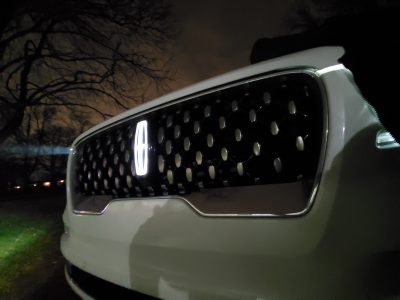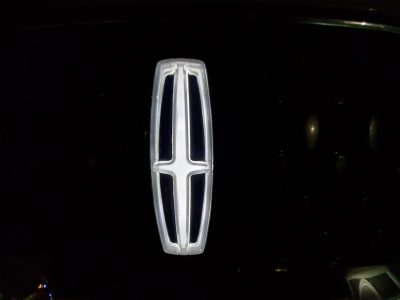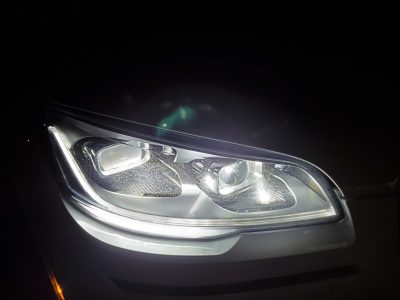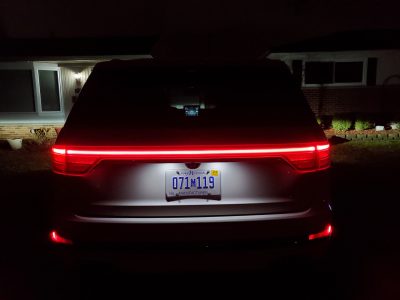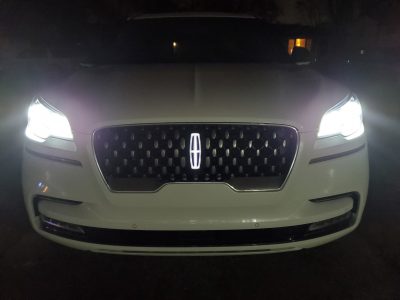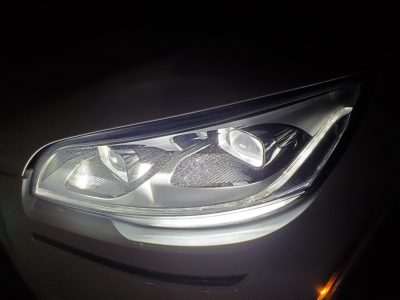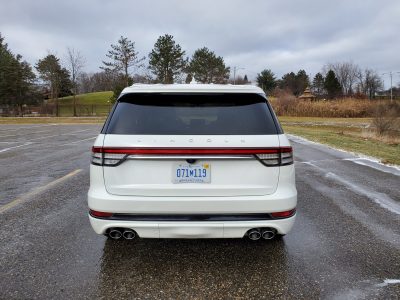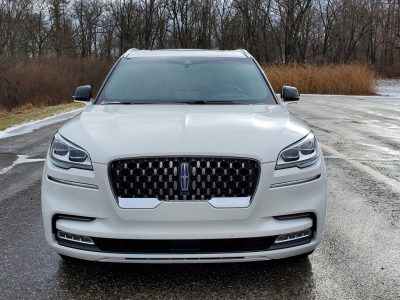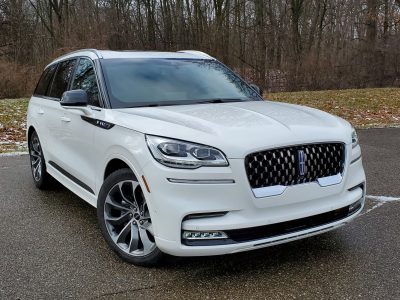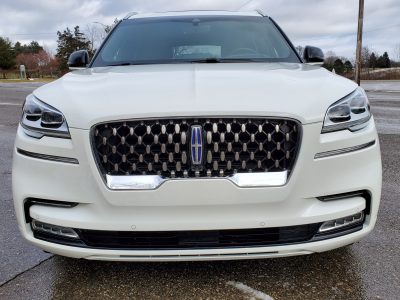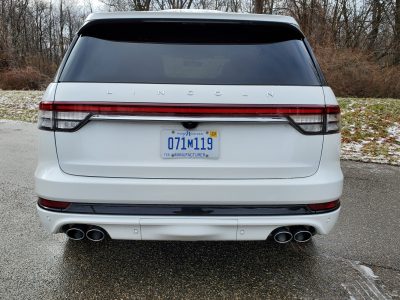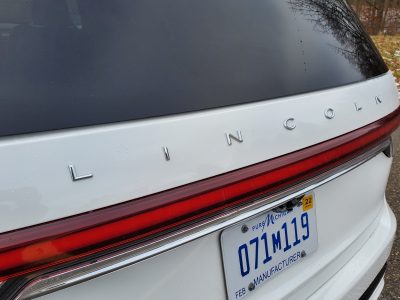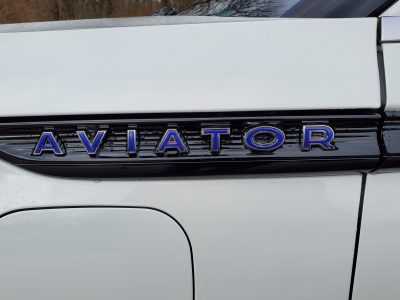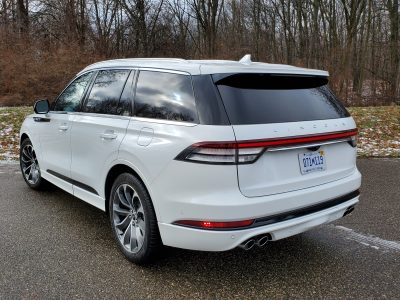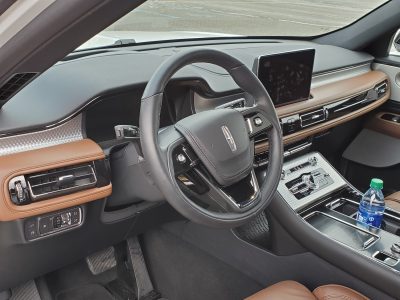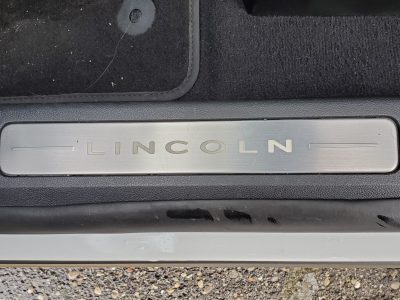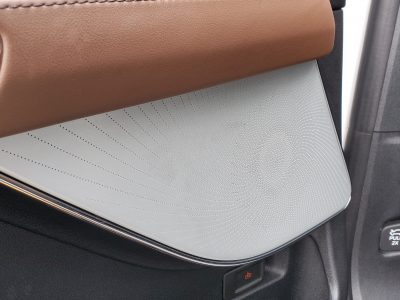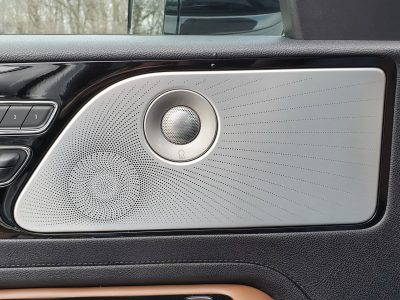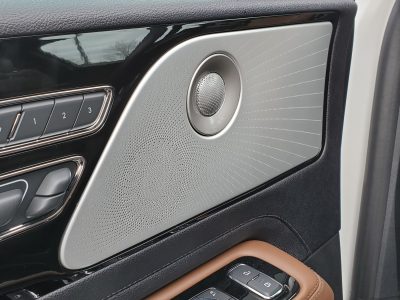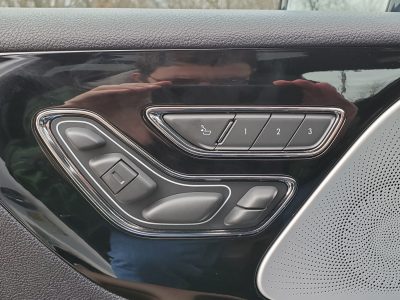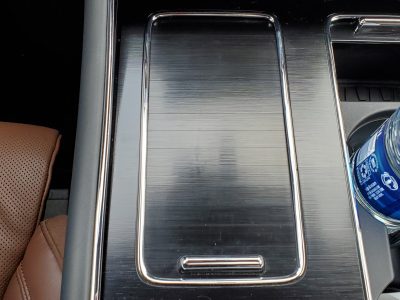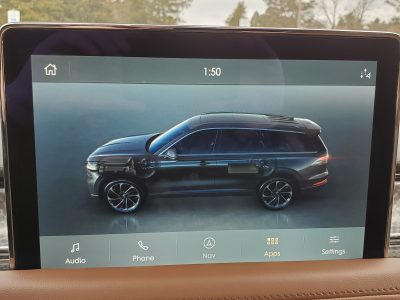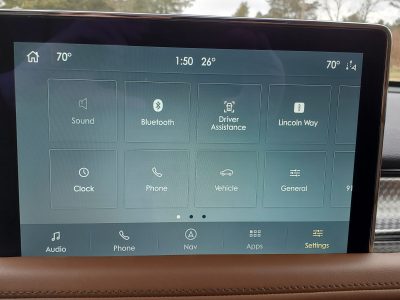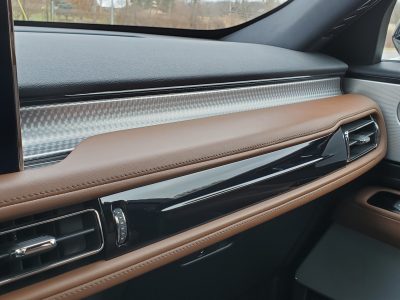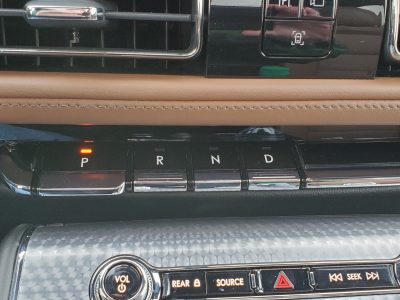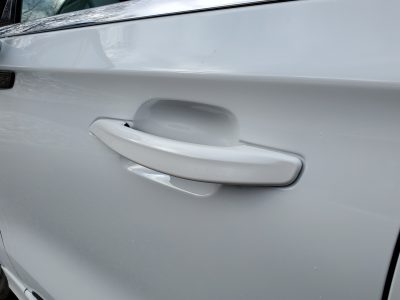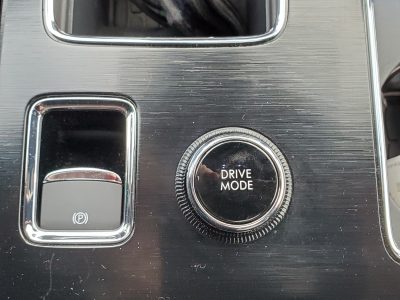Lincoln is on a roll, We first experienced Lincoln’s assault on the luxury SUV sgment when we had a chance to get behind the wheel of the flagship Lincoln Navigator. But for all the glitz and glamor wielded by the Gator, it cannot bear the weight of Lincoln’s future alone. The Nautilus has been an admirable guest star, but Lincoln is placing its bets on two new models, the Aviator and the smaller Corsair. To find out what each of the duo brings to the table, Lincoln invited us to test them back to back, but can the Aviator and the Corsair (review pending) deliver the goods? We started out with the Aviator to see if it succeeded in bringing Navigator luxury in a smaller package.
Take Flight With The Best Design In The Game:
When it comes to its suit of clothes, the Aviator is arguably the best visual interpretation of Lincoln’s design language. Wheras the Navigator embraces and even flaunts its size, the Aviator instead builds upon its theme of flight. The front grille still carries a healthy amount of chrome, but the headlights are much more honed and aggressive. The five star treatment even begins when you walk up to the Aviator, with the lights, putting on a brief show when you approach or depart the vehicle. The clean lines and the handsome belt lines are a subtle nod to 1950’s era Lincoln design, and the best angles are arguably from either the side or the rear three quarter where observers can fully process the elegant way that the floating roof’s silhouette seamlessly meshes with the chrome laden belt line. This detail is supposed to highlight the Aviator’s sporty nature, but thankfully the Lincoln doesn’t add the flared rear fender haunches that are often found on other performance vehicles.
When viewed with its blue oval counterpart the Ford Explorer, the design superiority enjoyed by the Aviator is hard to ignore, with the Explorer’s lines making us question how that model manages to be such a big step down from the Aviator. We also like the way that Lincoln has moved the Aviator badges to the sides of the vehicle. While this may seem to be a minor move in the eyes of many Aviator buyers, moving the badges there does allow the Aviator to have a more assertive identity, and it also shows just how much value Lincoln is putting in its all new non-alphanumeric naming scheme. The new duds also allow the Aviator to outshine some of its German rivals, and it even manages to be a notch ahead of certain Land Rover offerings.
A Cabin Like A Lear Jet:
Ever wonder what it would be like if you were given the opportunity to nestle into the luxurious cockpit of a sleek private jet? While the bulk of mere mortals will never have the privilege, the cabin of the Aviator comes pretty close to replicating that experience. Like the exterior, the cabin is clean, simple, and luxurious with Lincoln designers clearly avoiding the questionable designs and complicated shapes that plague domestic rival Cadillac. The rectangular climate vents for example are very reminiscent of vintage Continentals, while the warm woods and leather accents mix beautifully in symphonic harmony. Bonus points for the Detroit Symphony Orchestra providing the melodies for some of the Aviator’s chimes and warning tones (A video of those sounds are at the end of the review.)
Like the Navigator, our Black Label equipped Aviator arrived with Lincoln’s perfect position seats. Boasting 30-way adjustability, heated and cooled capability, and even massage these seats are the absolute pinnacle of comfort. The second row also benefits from a set of spacious captain chairs that allow occupants to have generous amounts of room to stretch out and relax on long journeys. But even the most opulent of jets have economy seating for those in the very back, and in the case of the Aviator, the third row is the equivalent of being in economy class. The space is very tight for adults, with the space being suited for small children. We preferred to fold the rear seat down during its stay with us to help add some more cargo room to the rear.
Lastly, the 28-speaker Revel Ultima audio system is arguably one of the best stereos in the segment, period. The sound quality of this system is simply superb, and the way it elegantly tickles your ears with good amounts of treble and earth shaking bass elements is truly something to behold. Emily certainly got enchanted with the Revel unit, and didn’t want to leave its embrace even for an episode of Dr. Who (her favorite TV show.) The only items that prevented the Aviator from getting a perfect score in this arena were its 10-inch touchscreen and the 12.3 inch digital instrument display. The gauge cluster was inoffensive to say the least, and we wished that it offered more customization especially when selecting the various drive modes as is the case with some of its high priced rivals.
Mixed Bag Performance Dulls The Mood:
With all the perfection that the rest of the Aviator brings, it was a shame that the performance hardware was arguably the biggest drawback of our tester. Before we get into that, we might as well focus on some of the things it did well. For instance, wielding 495 horsepower and an outright insane 630 lb-ft of torque helps make the Aviator a straight line monster. Being a GT model, our tester’s 3.0 liter twin-turbocharged V6 was paired with a 75 kilowatt electric motor which made acceleration about as effortless as slicing through butter with a hot knife. However, the transition between gas and EV power was problematic, with sudden throttle inputs confusing the gas engine, the electric motor, and the 10-speed automatic. This is mainly due to Ford’s decision to shoehorn the electric motor between the engine and the transmission which is supposed to improve towing and performance. However, in reality, this communication breakdown caused the Aviator to either surge forward very aggressively, or feel flat footed at times.
The electric battery pack on board brings 21 miles of range, but with 781 lbs of extra flab to lug around, our tester went through this amount rather quickly when out and about through town, which required it to be a frequent visitor to our designated charging area in the garage. The extra weight also impacts handling, with our tester feeling clumsy and unsure of itself when pushed hard. In short, the Aviator GT is not a performance SUV, but instead prefers to focus on coddling and spoiling its passengers. Braking proved to be a lone diamond in the rough, with our tester doing a good job delivering smooth stable stops every time.
Value Quotient:
Pricing for the 2020 Lincoln Aviator is very reflective of the segment it competes in, with the base Aviator model starting at $51,100. A base GT model is positioned above the Reserve trim, with those models starting at $68,800. Our tester mixed the GT’s equipment with the luxury laden Black Label package which also helped balloon the starting price to $77,695. While our tester was lightly optioned when compared to other Black Label offerings (no interior theme package for example) the bits of equipment it did have helped create a final as tested price of $88,895 which includes the $1,095 destination fee. This price helps put it in the upper echelons of luxury SUVs, but it also allows the Aviator GT to compete with its closest rival, the Land Rover Range Rover Sport P400E. The Brit has a higher $79,900 base price for HSE trim, but the flagship P400E Autobiography starts at $88,890 which is very close to the Black Label. The Range Rover lacks the performance offered by the Black Label, and it also falls behind in luxury equipment, and even interior quality, though the latter is still a very opulent place to spend time in.
With a strong presence, private jet-esque luxury, and electrified performance the 2020 Lincoln Aviator certainly has all the goods to be a supporting actor to the Navigator. While it’s Explorer based origins do create some challenges in terms of interior plastic quality, there’s no denying that the Lincoln enjoys a strong advantage in equipment and luxury content. Hopefully when the Aviator eventually receives the inevitable mid-cycle update in a few years, Lincoln will not mess with the winning formula too much, and help shape some of the rough edges to make the Aviator even more of a stand out than it already is.

Carl Malek has been an automotive journalist for over 10 years. First starting out as a freelance photographer before making the transition to writing during college, his work has appeared on numerous automotive forums as well as websites such as Autoshopper.com.
Carl is also a big fan of British vehicles with the bulk of his devotion going to the Morgan Motor Company as well as offerings from Lotus, MG, and Caterham. When he is not writing about automobiles, Carl enjoys spending time with his family and friends in the Metro Detroit area, as well as spending time with his adorable pets.



